Below are the on page SEO ranking factors you need to pay the closest attention to.
All of these factors either:
- Directly influence your page
- Impact a factor that does affect your page
I’ve left out anything you could consider not actionable, or outside of your control.
I’m also going to share the five most important factors to pay attention to, but if you haven’t seen it before here’s a video from my blog talking you through those:
The Most Important On Page SEO Ranking Factors
Let’s dive straight in…
1. Keyword At The Start Of Your Title Tag
Putting your keyword at the start of your title tag helps you gain favour in search engines:

Why?Because it allows search engine crawlers to see what the main topic is going to be about, within the first few milliseconds of crawling your page.
If you worried that it may not be the best headline to send to your audience…
You can use Yoast to help you set up different title tags for readers and search engines.
2. Page Title In H1 Tags
“<H1>” tags ensure that your keyword-rich title is crawled effectively by Google.
Google crawlers look for what is contained within HTML.
When the page title isn’t inside these tags, it can be overlooked.
You don’t want that to happen.
WordPress websites should do this for you, but see if your theme is compatible. If you’re using another platform you’ll have to do this manually.
So in order to format this title tag:
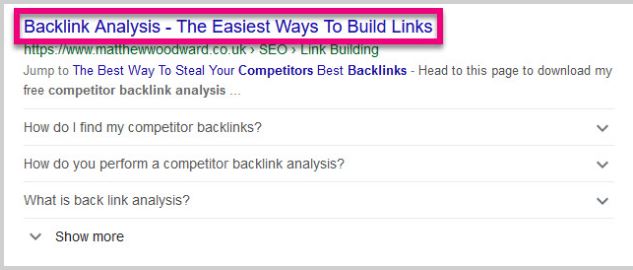
You’d add it into your blog posts code editing area and add the “<H1>” heading tags.
That should look like this:

You can learn more about heading tags over in this guide from W3Schools.
3. Keyword In Your URL
A Google roundtable session in 2016 revealed…
Although it’s considered a “very small” ranking factor, I’d consider it part of your SEO best practices to add your primary keyword to all of your pages URLs from now on.You can see that I do this for all of my URLs:
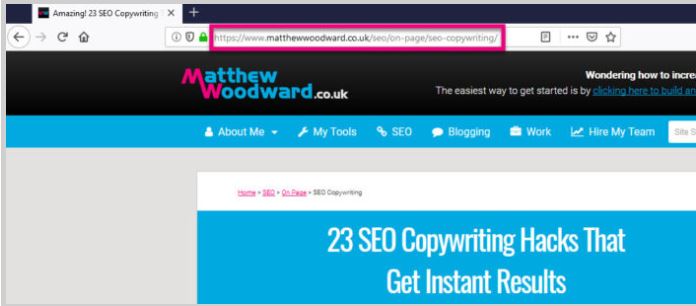
Because every little helps when you’re trying to get to the top.
4. Length Of URL
The shorter and clearer your content’s URL is the more favourable it is to a search engine.
Why?
This is useful to a search engines crawlers because…
- It adds clarity to your page
- It requires less time to crawl through your site map
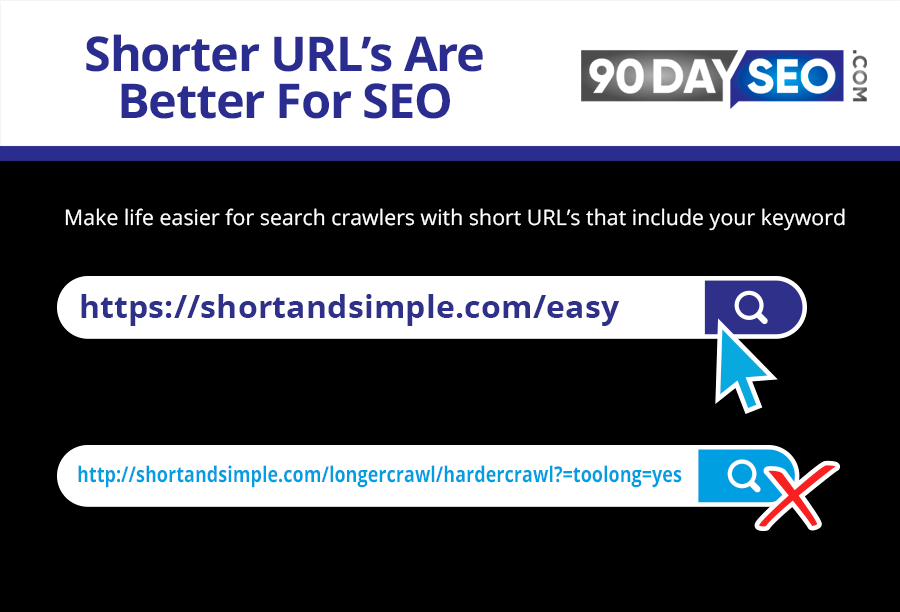
You’ll also see a user experience benefit because it’s easy to remember.
5. Keyword In Your Meta Description
Your meta description tag is a factor Google pays attention to.
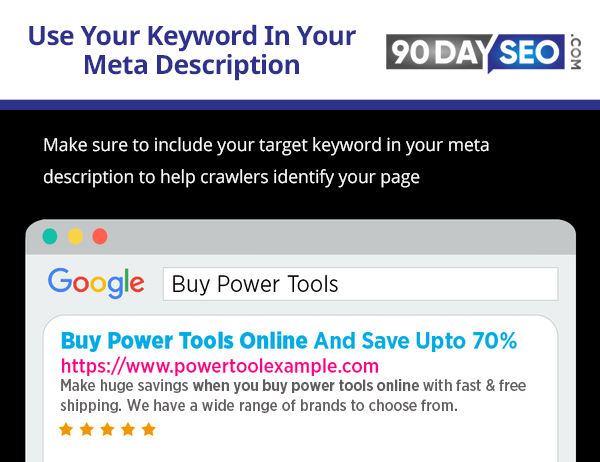
Optimising it to:
- Give an honest overview of what your page is about
- Include your keyword
…Can help you boost your page’s overall rankings.
6. User Experience Focused Content Structure
Your content should be focused on user experience.
This means your layout and formatting should allow someone to quickly and easily navigate their way through your content to find the answer to their query.
Factors which influence user experience are:
- Clear headings and subheadings
- Visuals like images or visuals
- Breaking your text up into paragraphs
- Using bullet points and text boxes
You should then aim to create a layout for your content that is easy to read and navigate.
Help users find the answer to their question as quickly and obstruction-free as possible.
Take a look at the image below:
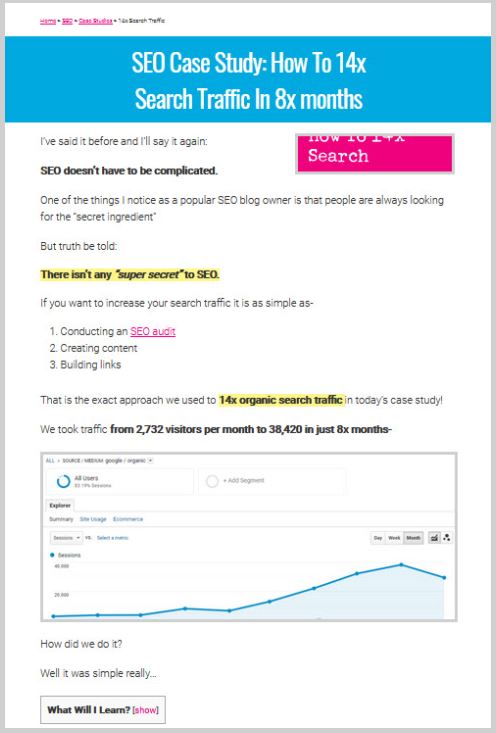
You can see my content contains…
- Lots of white space
- Easy to read headings
- Bullet points
- Images
- Links
This makes the content easy on the eye and easy for a reader to work their way through.
User experience is one of the major focuses of on-page SEO.
7. Unique Content
Search engines work hard to reduce the amount of duplicate content in their results. This ensures the same content can’t rank for the same keyword twice.
If it detects the exact same content is being used on multiple sites or pages…
Only one of those pages containing the content will rank for it.
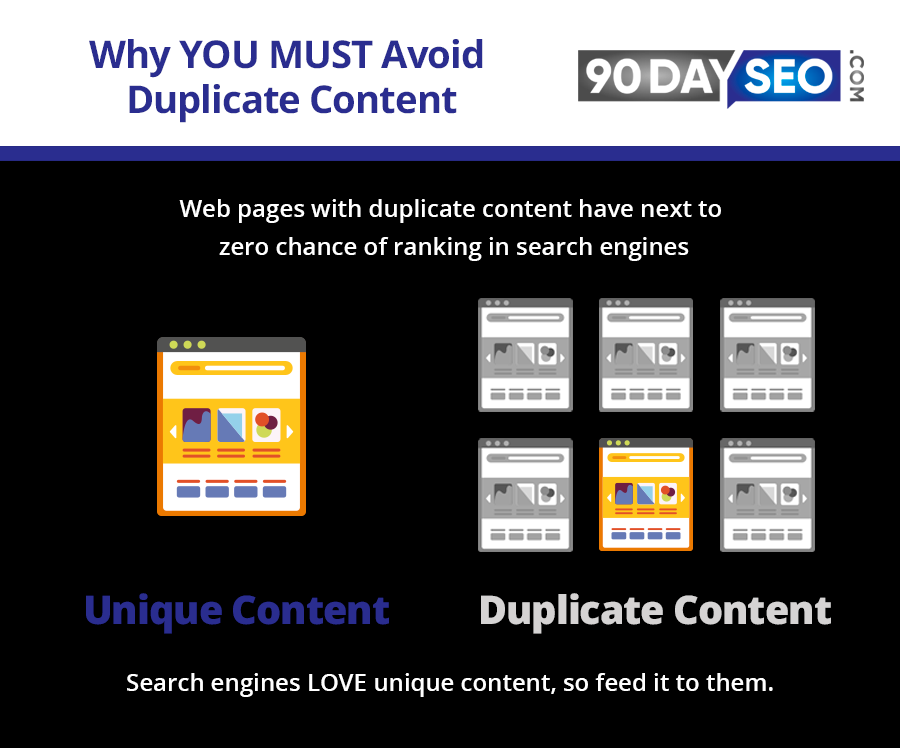 You need as little duplicate content on your site as possible to avoid canonicalization.
You need as little duplicate content on your site as possible to avoid canonicalization.
(Where your site turns cannibal and eats its own rankings, in essence)
And as Rand Fishkin points out over on Moz…
It shouldn’t just be unique… It should add unique value.
For example if your content is teaching people how to cook rice, it should show them a new way to cook rice and not the way every other article on the internet is showing them.
8. Content Reading Level
You might not know this, but Google used to tag content as:
- Basic
- Intermediate
- Advanced
…based on its reading level.
From a copywriting point of view, a lower reading level as close to basic as possible is advised for most websites. This makes your content accessible to the most amount of people.
But depending on your niche this could change.
A scientific journal would be expected to have a higher reading level than other sites. The same goes for a broadsheet newspaper and a tabloid newspaper.
This is how Google used to allow us to get a break down of our reading level-
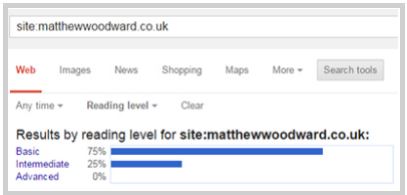
But that was removed as an option and is no longer publically viewable, but it does indicate that it’s something Google is paying attention to.
You can use the RankMath or Yoast SEO plugins to get a look at your reading level now-
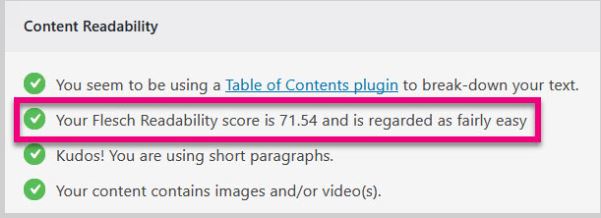
And irrespective of whether this is an active ranking factor or not – it’s a deciding factor for your visitors which have a direct impact on ranking factors like dwell time or bounce rates.
9. Keyword In First 50 to 100 Words
The sooner your keyword appears in your content…
The sooner a search engine’s crawlers can determine what your content is about.
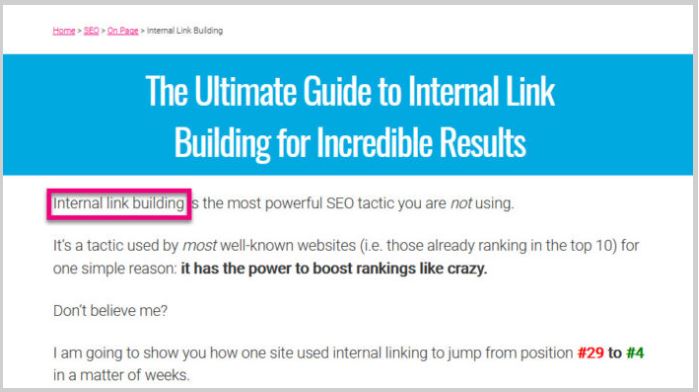
Many new SEO copywriters and bloggers forget about this…
They put the keyword right near the end of their introduction or even later in their article.
Be sure to check before you publish your article if it’s within in the first 50 to 100 words.
10. Subheadings In H2 Tags
Using header tags for your subheadings allows search engine crawlers to build a clear picture of your page, and the sub-topics you’ve written about.
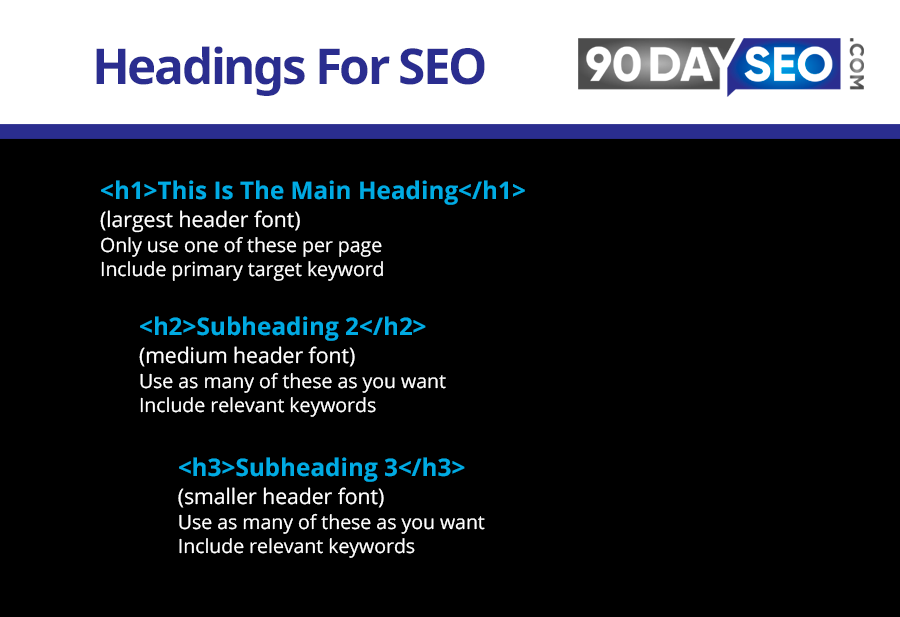
Not only does this add structure to your page for search engines, but all of your human visitors will also love it as well.
11. LSI Keywords In Content
LSI Keywords help give context to your content which basically just means words and phrases that are related to the topic you’re talking about.
There is much debate about whether they are still useful or not but they are still baked into my processes as I write this.
Let’s say you’re targeting “Podcast Microphones”. Your LSI keywords may be:
- Best podcast microphone
- Podcast microphone setup
- Cheap podcast microphone
- The Blue Yeti microphone
Sprinkling these LSI keywords throughout your content will make it more relevant.
But we have a very specific process to do this which I’ll be sharing with you later in the course.
12. Synonym Rich Content
It’s possible for pages to rank for keywords that aren’t even used on their page.
This is a byproduct of “Semantic Search”.
This is where a page ranks for a synonym of the main topic of the page.
This often happens for topics which are closely related to each other or which have different dialectical sayings or spellings.
For example…
“Hoover” and “Vacuum Cleaner” are two words that relate to the same topic. But Google could choose to rank a piece of content focused on Hoovers to also rank for Vacuum cleaner terms.
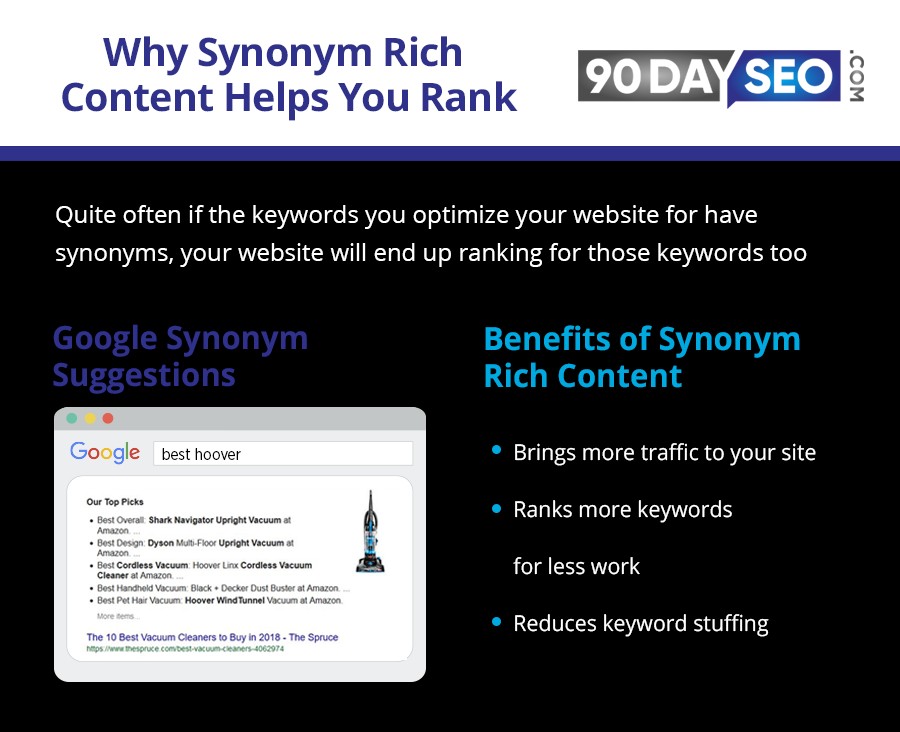
Optimising for synonyms can help you gain more traffic through multiple keywords and I’ll be showing you the exact process we use to optimize all of our content with synonyms later.
13. Keyword Order
The order a keyword is searched for and where it appears on your page affects rankings.
People often use variations of a search term although they have the same intent.
So it’s important to cover your bases.
Let me give you an example:
A group of people are looking to buy the book – Tribe of Mentors by Tim Ferriss. If four people search for it, they may use the keywords in any of these four forms:
- Tribe of mentors tim ferriss
- Tim ferriss tribe of mentors
- Tribe of mentors by tim ferriss
- Tim ferriss tribe mentors
Despite the fact they all want the same thing…
This word order can affect where you show up in a search ranking.
Especially in a highly competitive niche.
To combat this you should contain a mixture of keywords and their orders throughout your content to ensure you maximise the reach of your page.
14. Use Of Outbound Links
Outbound links can help a search engine determine the overall value of your content.
Citations, quotes and links back to research articles about the topic you’re discussing help add authority to your page and show you’re trying to add value.
Note: Place links to trusted authority sites in your niche. If your linking to hacked, malicious or deinexed sites – that isn’t a good signal to be sending to Google.
15: Internal Linking
Internal link building is one of the most under utilised strategies in SEO, but it’s something you should pay attention to.
An internal link is a link from one page on your site, to another relevant page on your site.
Take a look at this example from my what are keywords page-

When I wrote a section about how keywords signal intent, it made sense to link to my types of keywords page.
This adds extra value to the reader because it gives them an extra resource to read.
But it does something else too.
It helps make my site much easier for crawlers to crawl, by giving it a new access point to another part of my site.
And if that page has some good link juice, that power can be shared between pages.
16. Working Links
Make sure that all of the internal and external links across your site are working and not leading to 404 pages.
Not only does this waste link juice, but it also does serious damage to your user experience which has a knock-on effect to many other metrics.
17. Optimised Image Alt Tags
Alt tags help Google to interpret the images on your page.
Because image crawlers can’t identify every image with 100% accuracy, it’s better to help them figure out by adding alt tags to your images.
Take the below image as an example:
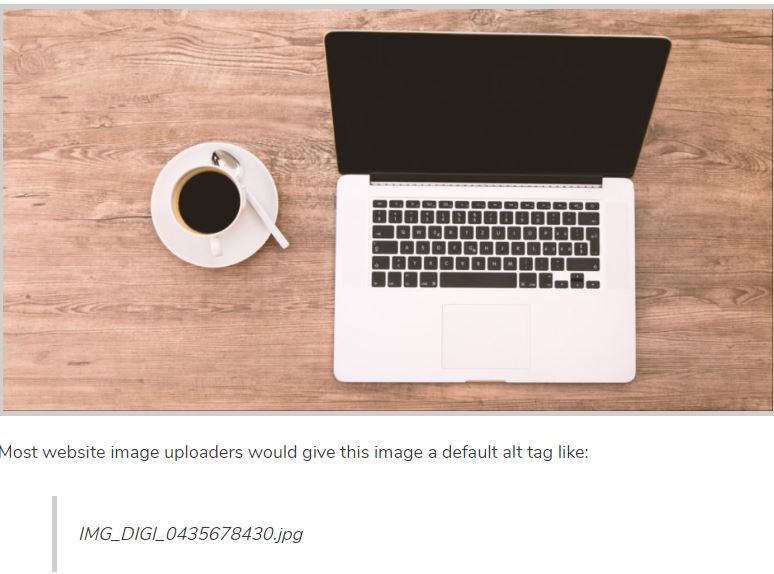
But this is hard for a crawler to understand.
Instead it’s better to use descriptive alt tags to explain what the image is. Such as:
- My personal workspace
- Macbook and coffee cup
- Old wooden table with modern laptop
You get the picture. (Literally.)
These alt tags can also contain keywords to help add relevance to your page.
You can sprinkle them throughout the images on your page but don’t stuff them.
18. Mobile Responsive Website
In 2015 Google began to penalise sites which aren’t mobile friendly.
Meaning if your site doesn’t format on a mobile device, you’ll struggle to rank highly.
This was compounded further by the rollout of mobile first indexing in 2018.
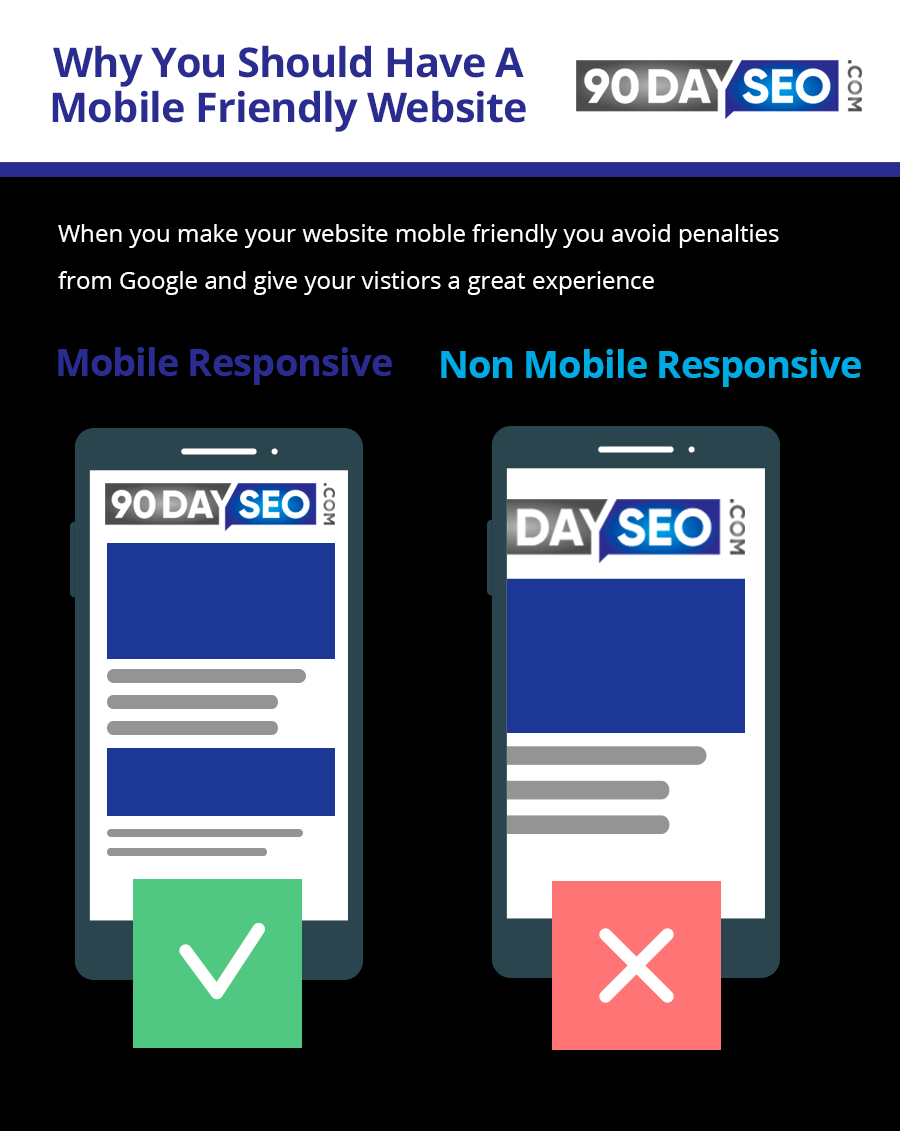
You can check if your site is mobile friendly by using this mobile friendly test tool.
19. Site Speed
In 2010 Google announced it would use website speed as an official ranking factor.
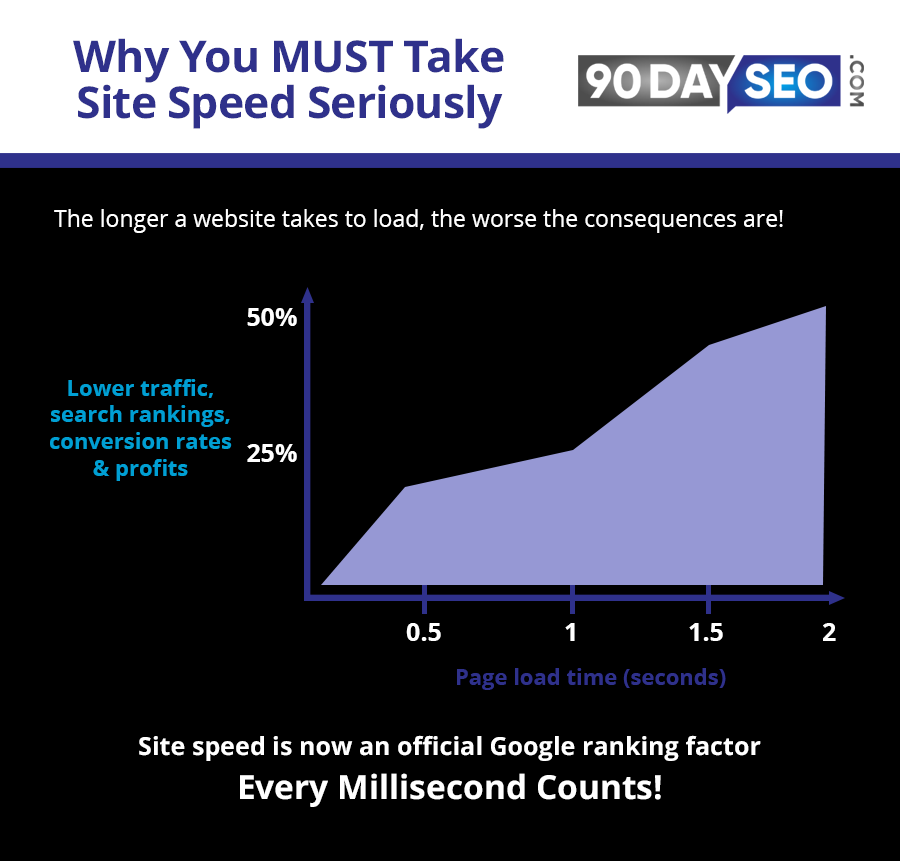
A slow website can cost you both rankings and money in the long term.
It’s a factor you should be taking seriously because it’s in your full control and you can usually increase your websites speed significantly in a couple of hours.
20. HTTPS Security
In 2014 Google announced websites with HTTPS encryption would be given priority.
And that this signal may get stronger over time.
If your website isn’t HTTPS yet, now is the time to switch.
21. Length Of Dwell Time
Dwell Time is the amount of time someone spends on your page consuming your content after finding you through a search result.
Let’s say I want to search for “How to cook jasmine rice”.
I pop that into Google and because I’m human, I click the top result:
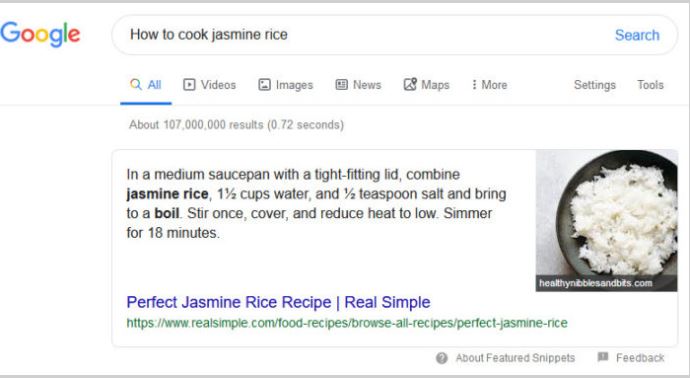
What’s going to happen when I land on that page is one of three possible outcomes:
- I’ll leave immediately: I’ll take one look at the content and say, “Nah, not for me”
- I’ll spend a few minutes there: I’ll read the content and think, “Okay, this is helpful”
- I’ll spend a long time there: I’ll read the content and think, “Yes! This is perfect”
This can help Google or any other search engine determine the quality of the content.
If the majority of people leave immediately, it’ll be tagged as poor content.
If people spend a few minutes it’ll be tagged as average.
And if people spend a long time there it’ll be excellent.
You can improve your dwell time by improving the quality of content and using different SEO copywriting techniques throughout your writing.
22. Bounce Rate
The official line from Google is that bounce rate doesn’t affect rankings.
But Moz has some interesting data to show that it correlates with higher rankings.
If you don’t know what bounce rate is…
It’s how many people come to your page and leave before visiting another page.
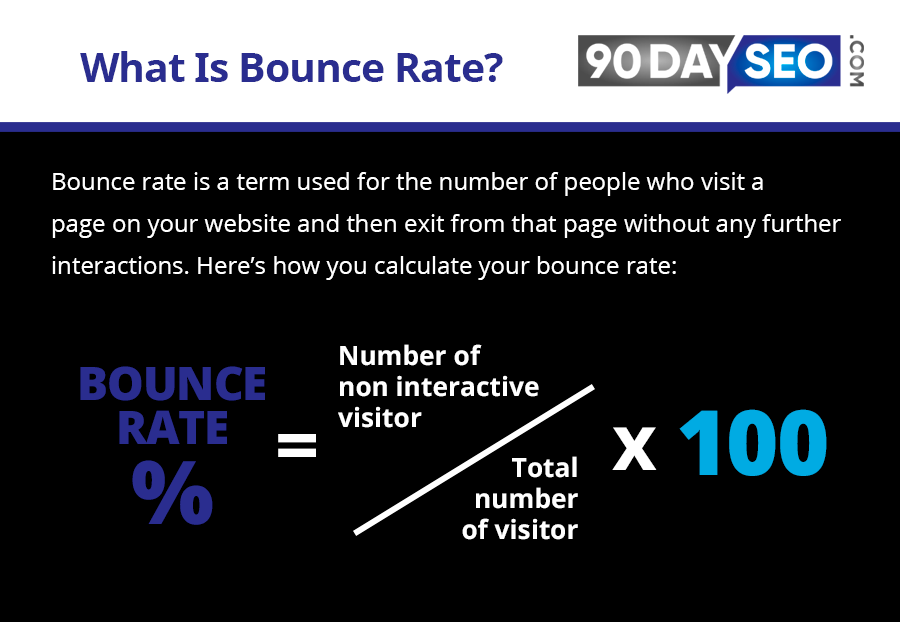
I’m going to be guiding you through how to create excellent content later in the course so you won’t suffer from this problem!
23. Length Of Content
Long-form content consistently outperforms short-form content in search rankings.
In fact, Brian Dean at Backlinko found the average length of articles that ranked number on the first page was 1,890 words.
If you take a look around my blog too, you’ll find that most of my articles start at 1,000 words and even go all the way up to 10,000 words.
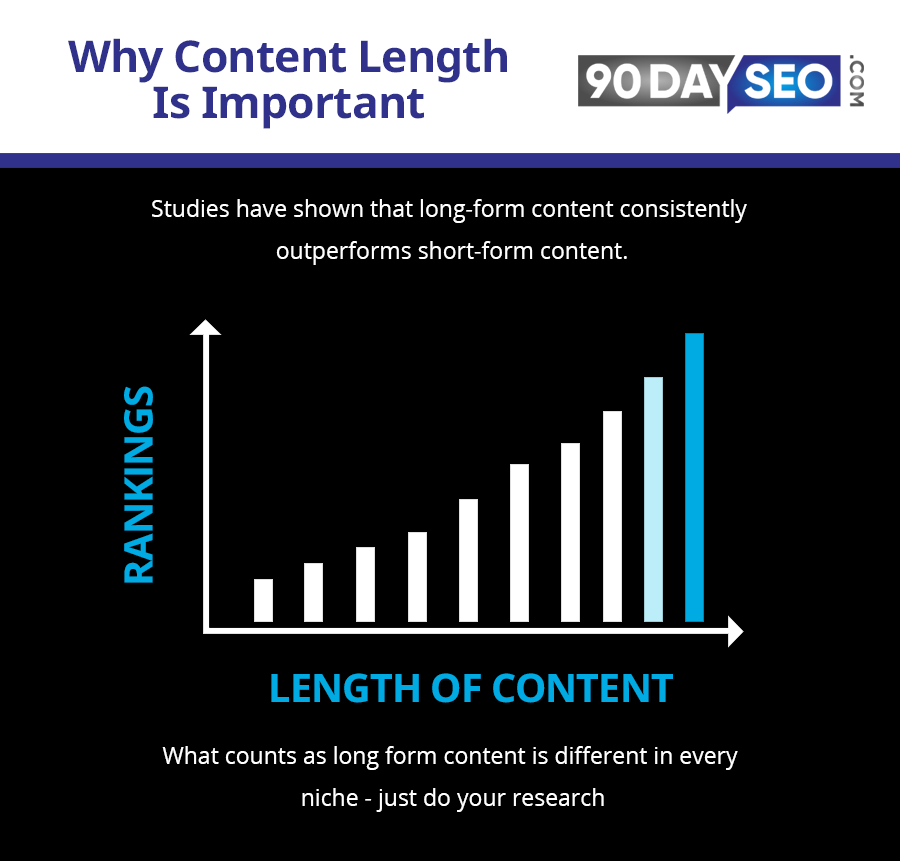
What counts as “long” will change between niches and I am going to show you how to calculate exactly how many words you need to write later in the course.
24. Depth Of Content
Depth of content is my way of saying your content shouldn’t be “thin”.
Whilst your content should be long, it should also contain a depth of relevant information which helps people get the answers they need.
Let’s say there are two articles about cooking jasmine rice. The first one says:
- Step #1: Boil water
- Step #2: Put rice in water
- Step #3: Wait until rice is soft
- Step #4: Eat rice
Whereas the second one says:
- Step #1: Boil the water and add two pinches of salt
- Step #2: Rinse the rice before you add it to the water
- Step #3: Put the rice in the water and stir for the first two minutes
- Step #4: Begin to…
…You get the picture.
The more depth of information there is…
The more valuable it will be perceived by a search engine’s crawlers.
25. Use Of Multimedia
Using images and videos in your content can help to…
- Increase dwell time
- Decrease bounce rate
- Increase your social shares
It can also increase the perceived value of your content, and attract backlinks.
26. Freshness Of Content
Having fresh, up-to-date content can help you improve your rankings. It can also breathe life into content you’ve written in the past.
Google shows the date of the latest update for an article in its search results:

This means that Google (and your readers) cares about how up-to-date your content is.
From personal experience, I know that I’m more likely to click on a more recent link. So it could help to improve your click-through rates too.
27. Spelling And Grammar
Google have pointed out, you should pay attention to your spelling and grammar.
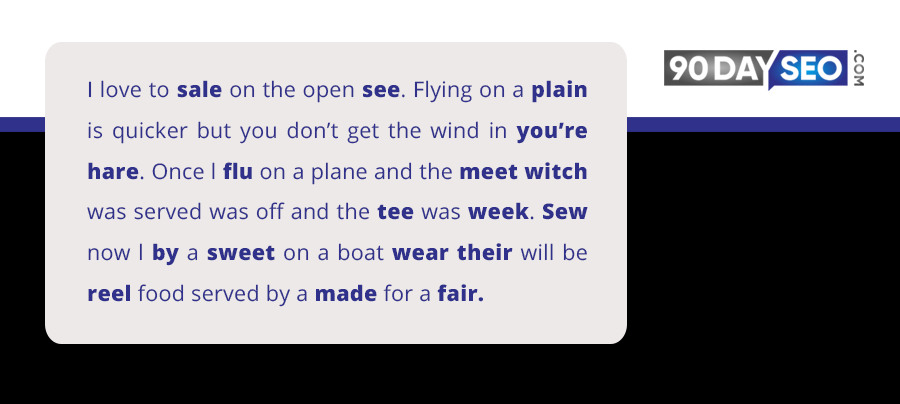
Whilst the odd mistake and error won’t destroy your website…
Illegible content that doesn’t make much sense will be perceived as low value.
The Top 5 On-Page SEO Factors
Not all ranking factors are created equal.
And some on-page SEO factors have stronger weights in the algorithm than others.
So here are the top 5x on-page factors for you to focus on (click the link to jump to that section of the guide):
- Mobile responsive: Ensure your site is optimised for mobile devices.
- Site speed: Make sure your site loads quickly and efficiently for users.
- Keyword at the start of your title tag: Get your keyword into your headline, preferably towards the start.
- Internal linking: Create links between this page and the other relevant pages of your site.
- Length of content: Make your content as long and as in-depth as needed.
If you focus on these five factors you’ll get the most bang for your buck.

But be sure not to neglect the other ranking factors for too long though.
On Page SEO Checklist
If you’d like a more actionable way of applying these ranking factors to your site…
I’ve put together a free on-page SEO checklist for you to download.
It shows you all of the factors above, which you can use for reference when you’re preparing content for your site. (I print it off and keep it next to me).

Wrapping It Up
You’re able to control all of the on-page ranking factors in this list.
And some of the changes can be made to your site in as little as 60 seconds.
If you’re short on time you should focus mainly on:
- Mobile responsiveness
- Your site speed
- Putting the keyword at the start of your title tag
- Internal link building
- The length of your content
But you will have to address other factors at a later date.
And in my opinion it’s better to take care of them sooner rather than later because there’s no reason to be carrying extra dead weight.When you’re editing your content to prepare it for your site, make sure you have a copy of my on-page SEO checklist handy.
This will help you adjust your content and ensure it’s fully optimised before you publish but I’m going to step you through our exact content optimisation process later in the course.